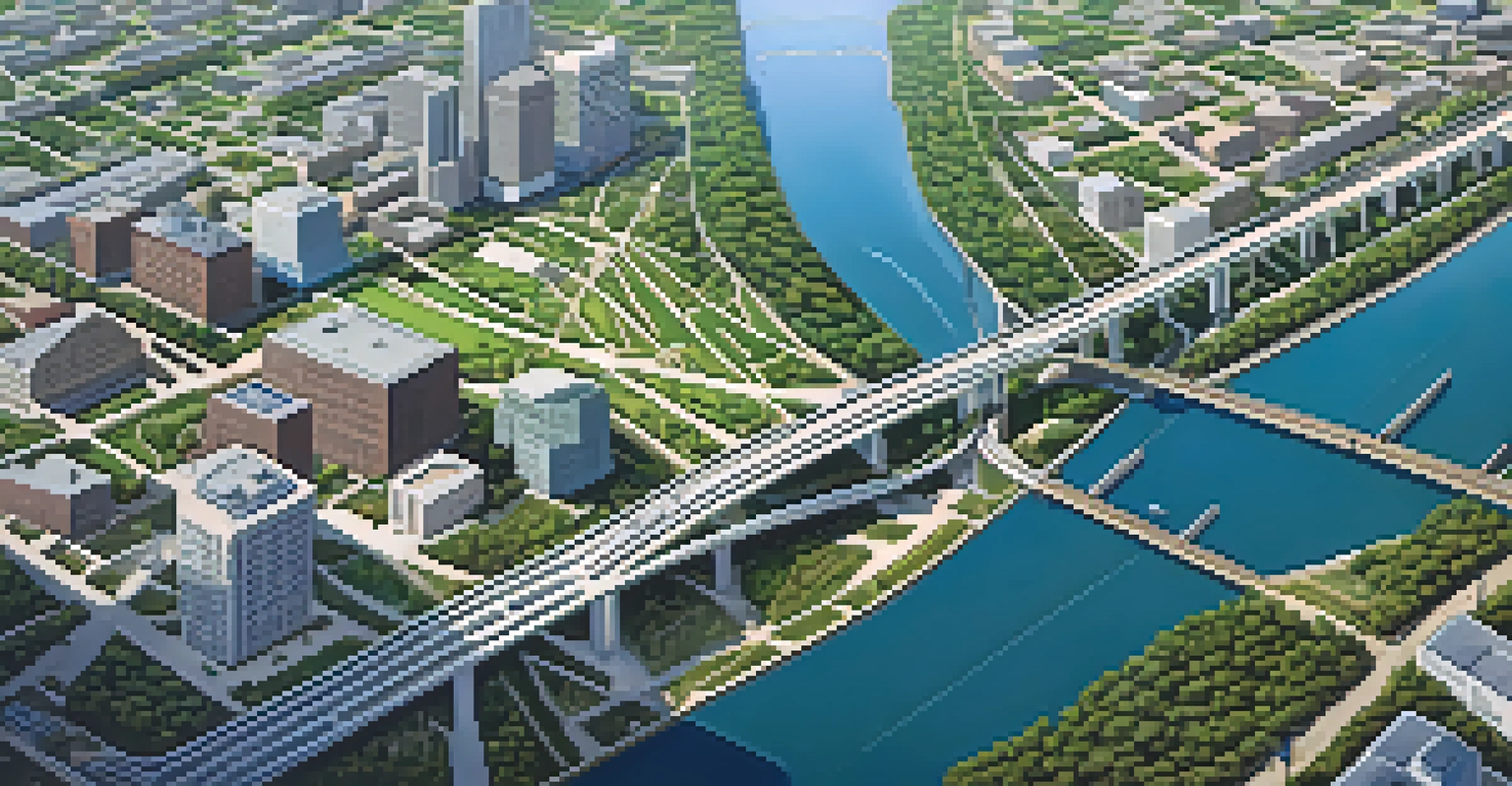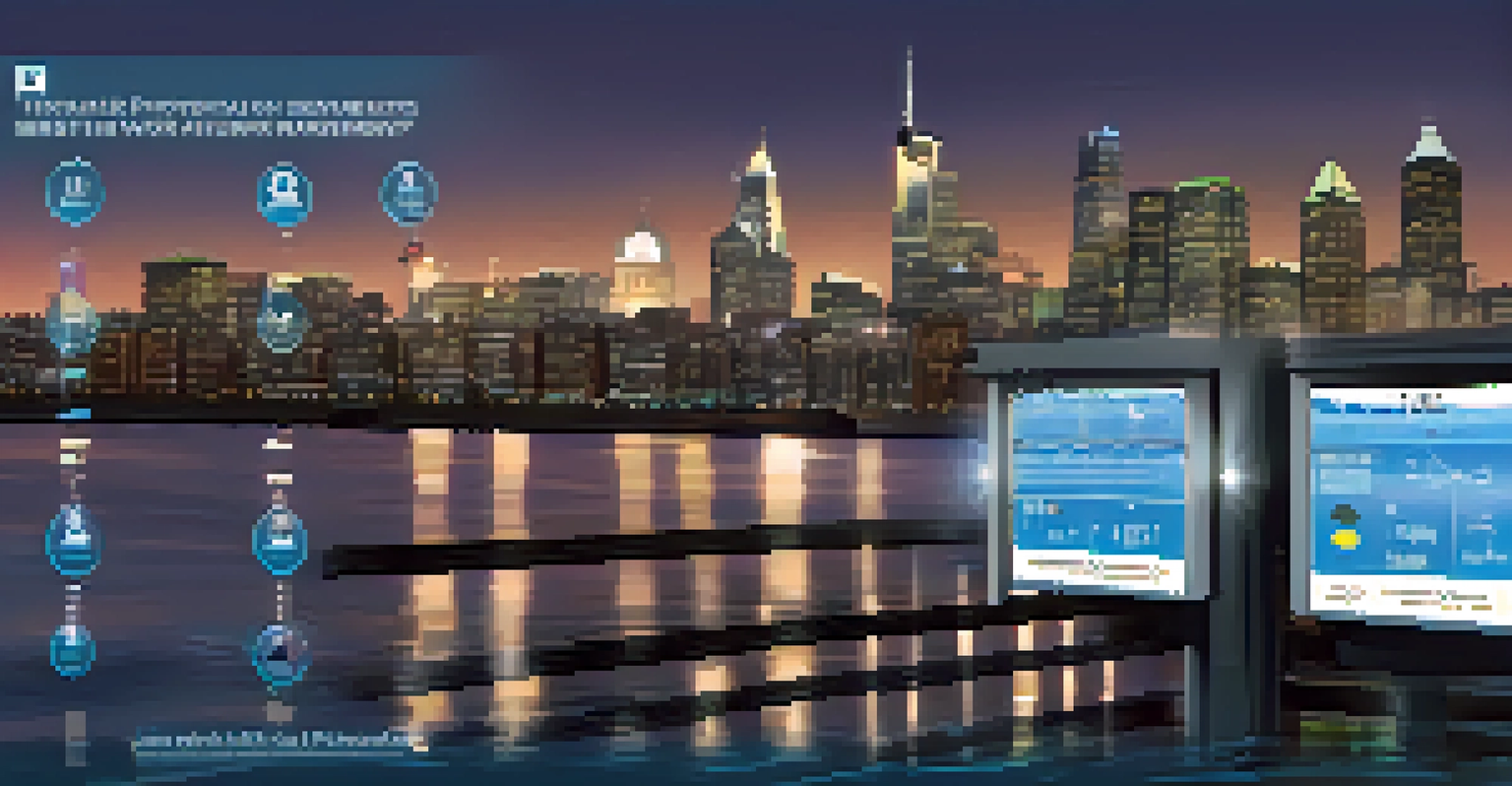Assessing Houston's Infrastructure Resilience to Natural Disasters

Understanding Houston's Vulnerability to Natural Disasters
Houston, with its coastal location and sprawling urban landscape, faces significant risks from natural disasters. From hurricanes to flooding, the city's infrastructure must withstand a variety of challenges. Understanding this vulnerability is the first step in assessing resilience. The city's unique geography, which includes bayous and low-lying areas, makes it particularly susceptible to severe weather events.
Houston is the only city in America that has a major urban flood risk but has no zoning regulations to manage that risk.
For instance, Hurricane Harvey in 2017 showcased the devastating impact of heavy rains and flooding on the city. Many neighborhoods were severely affected, highlighting the urgent need for improved infrastructure. This event also raised awareness about the importance of proactive measures to bolster resilience. Recognizing these vulnerabilities allows city planners and residents alike to better prepare for future threats.
By identifying risk factors, Houston can implement strategies that enhance its infrastructure resilience. This proactive approach not only protects residents but also preserves the city’s economy and cultural heritage. The goal is to create a safer environment for everyone, ensuring that Houston can bounce back quickly when disaster strikes.
Key Infrastructure Components Impacting Resilience
Infrastructure resilience is multi-faceted, involving transportation systems, power grids, and drainage networks. These components must work together seamlessly to mitigate disaster impacts. For example, a reliable transportation system ensures that emergency services can reach affected areas quickly. Moreover, well-maintained roads are crucial for evacuation routes during emergencies.

The power grid is another critical component; without it, essential services can come to a halt. During disasters, ensuring that hospitals and emergency services have a steady power supply can save lives. Additionally, effective drainage systems are vital for managing stormwater, preventing flooding, and protecting neighborhoods.
Houston's Natural Disaster Risks
Houston's unique geography and coastal location make it highly vulnerable to natural disasters, necessitating improved infrastructure resilience.
By focusing on these key components, Houston can enhance its overall resilience. It’s not just about repairing what’s broken; it’s about creating a robust infrastructure that anticipates future challenges. This holistic approach helps ensure that Houston can weather any storm.
The Role of Technology in Infrastructure Resilience
Technology plays a pivotal role in enhancing Houston's infrastructure resilience. From smart sensors that monitor water levels to predictive analytics that forecast weather events, tech innovations are changing the game. For instance, real-time data can help city officials make informed decisions during emergencies, ensuring timely responses.
The best way to predict the future is to create it.
Additionally, technology can aid in improving communication between agencies and the public. During a disaster, timely updates can help residents make crucial decisions, such as when to evacuate. Using social media and mobile apps, Houston can keep its citizens informed and prepared for any situation.
Embracing technology not only enhances resilience but also fosters a culture of preparedness among residents. When people are informed and equipped with the right tools, they can better protect themselves and their families. Thus, integrating technology into infrastructure planning is essential for a resilient Houston.
Community Engagement in Disaster Preparedness
Community engagement is vital for increasing resilience against natural disasters. Residents who are informed and involved are more likely to take necessary precautions before a disaster strikes. Programs that encourage neighborhood preparedness can make a significant difference, fostering a sense of solidarity among community members.
For example, local workshops can teach residents how to create emergency plans and assemble disaster supply kits. When individuals feel empowered, they are better equipped to respond effectively during crises. This grassroots approach complements the city’s infrastructure plans, creating a comprehensive safety net.
Community Engagement Enhances Resilience
Informed and engaged communities are better prepared for disasters, highlighting the importance of grassroots initiatives in disaster preparedness.
Moreover, engaging with local organizations can enhance outreach efforts. Collaborating with schools, churches, and community groups can ensure that information reaches all demographics. A well-informed community is a resilient community, ready to face the challenges of natural disasters.
Government Policies Supporting Resilience Initiatives
Government policies play a crucial role in shaping Houston's approach to disaster resilience. By investing in infrastructure improvements and updating building codes, local authorities can significantly enhance safety measures. Policies that prioritize flood control, for instance, can lead to the construction of better drainage systems and levees.
In recent years, initiatives have been launched to promote sustainability and resilience. Programs aimed at restoring wetlands and green spaces not only improve aesthetics but also help absorb excess rainwater. Such measures demonstrate how ecological strategies can work hand-in-hand with urban planning.
Furthermore, government collaboration with private sectors can lead to innovative solutions. Public-private partnerships can fund infrastructure projects that might otherwise be unattainable. By leveraging resources and expertise, Houston can build a more resilient future.
Funding Challenges for Resilient Infrastructure Projects
Funding remains a significant challenge in implementing resilience initiatives in Houston. While the benefits of resilient infrastructure are clear, securing the necessary financial resources can be daunting. Budget constraints often lead to tough decisions, prioritizing immediate needs over long-term solutions.
Additionally, navigating the complexities of federal, state, and local funding sources complicates the process. It’s essential for city leaders to advocate for increased investment in resilience projects. By demonstrating the economic and social benefits of these initiatives, they can garner support from various stakeholders.
Funding Challenges for Resilience
Securing adequate funding for resilience initiatives remains a significant challenge, requiring collaborative efforts and alternative funding strategies.
Exploring alternative funding options, such as grants or community fundraising, can also help bridge the gap. Engaging the community in this process not only raises funds but also builds awareness and support for resilience efforts. Ultimately, a collaborative funding approach is key to ensuring Houston's infrastructure can withstand future disasters.
Future Outlook for Houston's Infrastructure Resilience
Looking ahead, Houston's infrastructure resilience depends on proactive planning and community involvement. The lessons learned from past disasters provide valuable insights into what needs to be improved. As climate change continues to pose new challenges, adapting and evolving strategies will be crucial.
Investments in sustainable practices, such as green infrastructure and energy-efficient systems, can pave the way for a more resilient future. By prioritizing environmental considerations, Houston can protect its residents while also contributing to global sustainability efforts. This forward-thinking approach will help mitigate the risks associated with natural disasters.

Ultimately, the future of Houston's resilience lies in collaboration between government, businesses, and the community. By working together, they can create a safer, more prepared city that stands strong against the forces of nature. The journey towards resilience is ongoing, but with commitment and innovation, Houston can emerge as a model for other cities facing similar challenges.